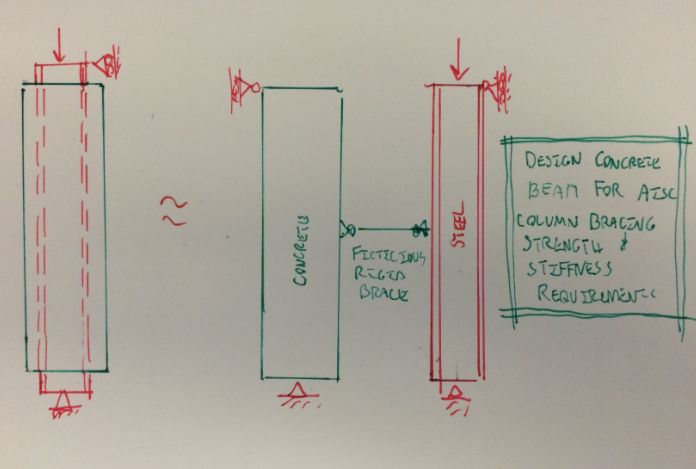JNEnginr said:
If you take a steel column (W12x87), 22ft tall and encase it in 24" of concrete, up the entire length of the column, does this change the unbraced length?
It's a matter of perspective. I'm going to assume that you're working on strengthening an existing column. I'm also going to assume that we're dealing with axial loads for the sake of simplicity. If we need to get fancier, let us know.
There are two fundamentally different approaches that one can take:
1) The steel and concrete act compositely and that combined section buckles in a half sine wave over the entire height of the physical column. The new composite column has a higher radius of gyration but an unchanged kL as Lomariandil mentioned.
2) The steel and concrete do not act compositely. As the designer, you decide on where you'd like to see the steel column braced and establish your bracing strength and stiffness requirements (AISC appendices in the US). Next you design the concrete column, acting on its own, to satisfy those bracing strength and stiffness requirements. In this sense, the concrete column can most definitely alter the effective length of the steel column. See the sketch below for an illustration of this concept.
Within these two general approaches, I know of a few ways to approach the computations to expedite the design. Let us know if that's something that you're interested in pursing.
I like to debate structural engineering theory -- a lot. If I challenge you on something, know that I'm doing so because I respect your opinion enough to either change it or adopt it.

